Measuring DX Evaporator Coils For Pricing: In the field with Chris Wright
Step by step instruction, including key visual tips to guide you through the process of measuring a DX Evaporator coil.

My first time looking at and attempting to measure a DX/evaporator coil was intimidating. One of the first DX coils I looked at was a 4-circuit (2 intertwined + 2 face split) with what seemed like a thousand capillary tubes; and on top of that, the coil sat on an angle. In reality, DX/evaporator coils are no more difficult than others to measure, they just include one or more distributors to supply refrigerant to the coil that have to be considered in the measuring process. Still, I was unsure how I’d price this thing competitively.
There are various techniques that can be used to ensure coil sizing precision, as well as supplemental data we can get from our clients that help to optimize performance. Having a coil schedule — a chart that gives estimated performance and capacities with given input specifications — or any performance data available, can also be helpful with space restrictions. Additionally, the data can be useful during the quoting process as well.
Although we often only visit a site once per job for the client’s convenience, there are also many occasions in which we’re measuring coils for budget pricing and know we’ll be able to return later for more details. For these budget situations, especially when measuring a larger quantity of varying DX/evaporator coil sizes, there’s a collection of variables you can always count on for quick and accurate pricing to the customer.
Before we start, get a free blank coil worksheet to record measurements.
1. Go ahead and take the finned height, only measuring from the top to the bottom of the fins on one end of the coil (not in the middle of the coil face).
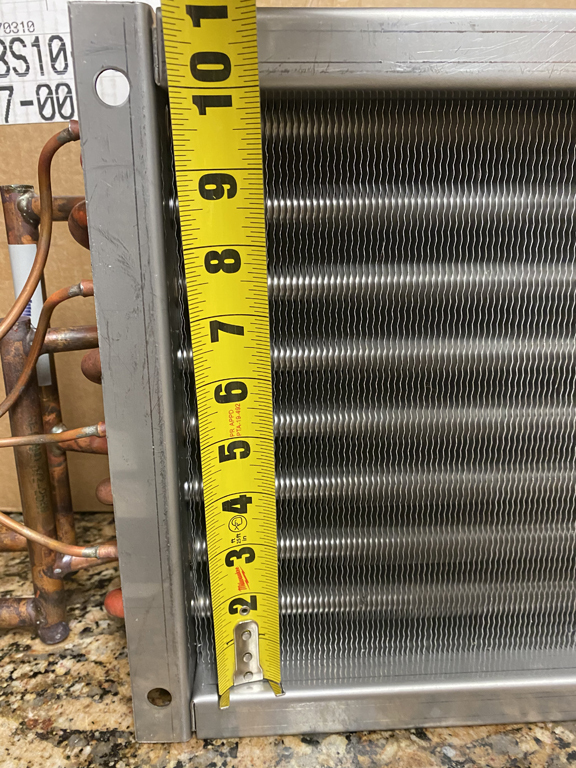
2. While on the face, measure the finned length next, also either at the top or bottom of the coil near the flanges (not middle). The tape measure should begin and end inside of the end flanges.
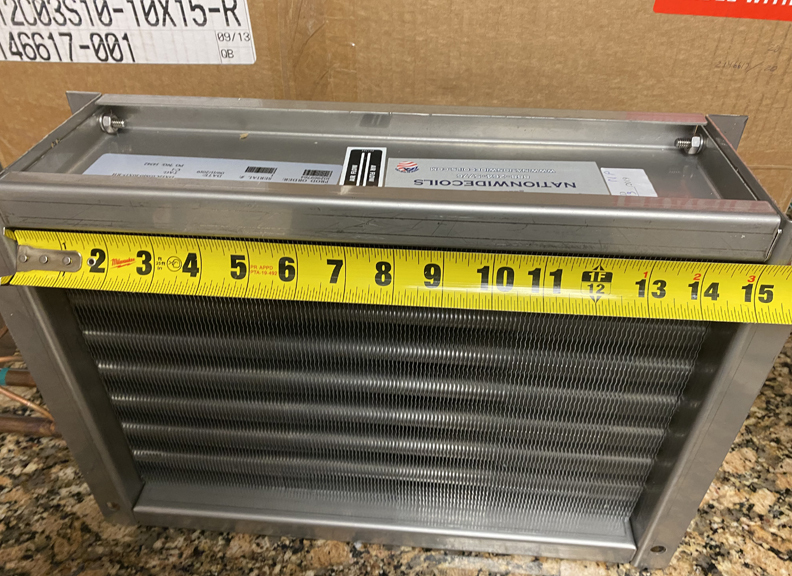
While on the face, I’d just go ahead and get the fins per inch . You can do this by taking a pen and counting the amount of fins between say 2” and 3” on the tape from left to right.
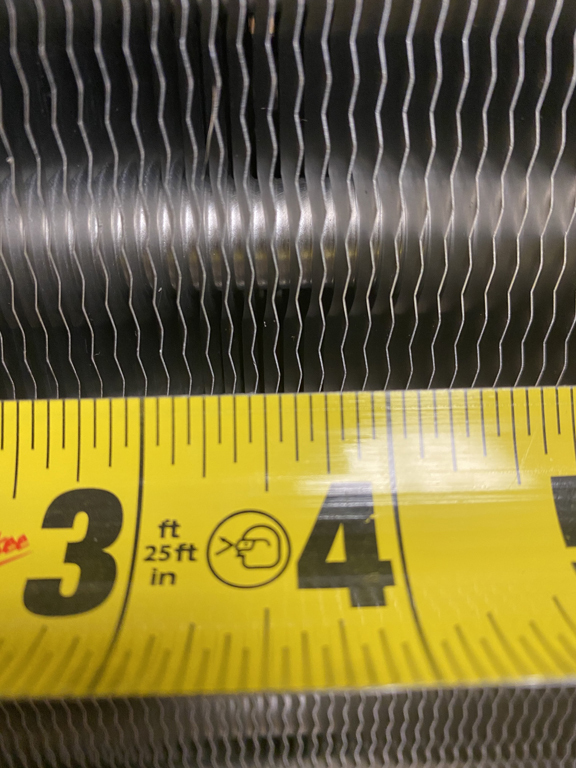
3. Moving along, a critical factor in pricing any coil accurately is the copper tube size (3/8”, 1/2”, 5/8”) and number of rows it has.
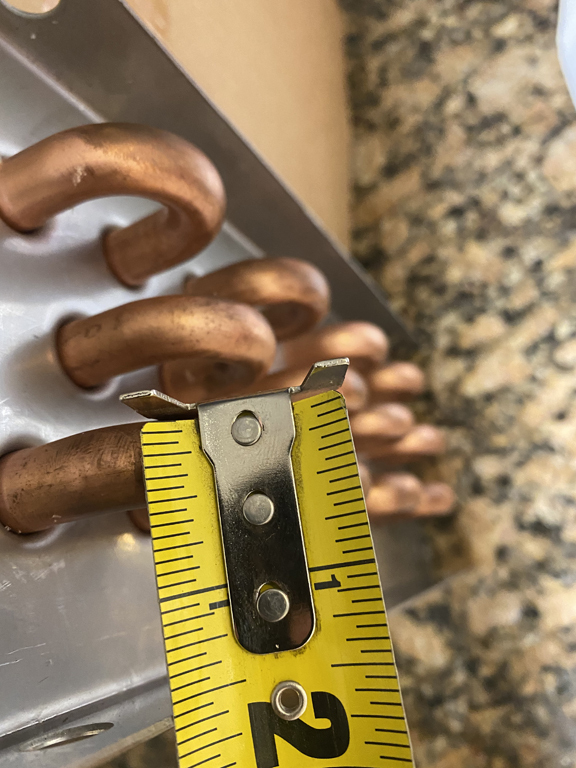
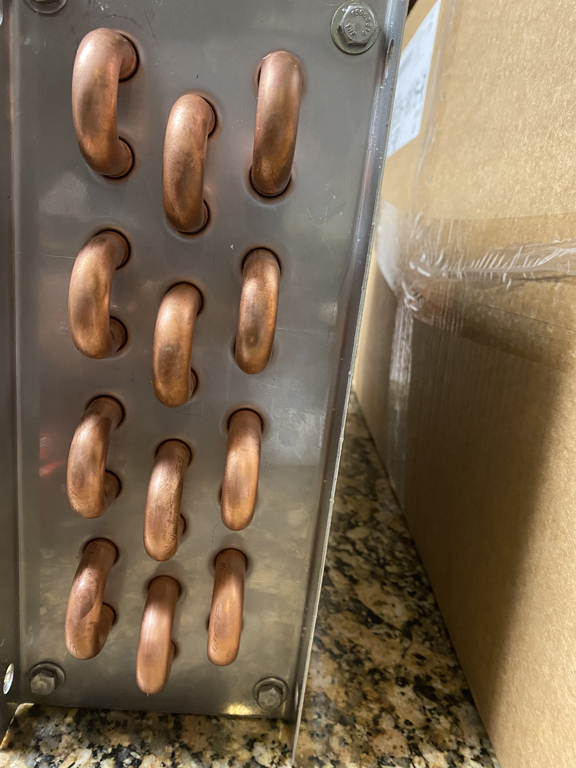
Depending on the face area of a coil, over- or under-counting on rows can make thousands of dollars of a difference on an estimate. When I do have access to an end of the coil that exposes its u-bends, I count the rows by determining how many tubes there are coming out of the end plate from left to right. This can often be confused with the amount of u-bends from left to right, whereas two u-bends could actually equal four rows. The number of circuits will also affect pricing, and this can be determined simply by counting the amount of returns or distributors you see.
When there is access to take all of the above measurements, you’re all set to get an accurate cost without worrying about factors that can increase your cost and affect profits. There is sometimes the need to improvise, and this is when it can be crucial to learn what additional performance info the building can provide. For instance, if the u-bends on an evaporator coil are not visible from either end to determine the number of rows, a combination of the casing depth and condensing unit capacity can be used to determine this. So, I can take the casing depth of the coil (say 5") and the capacity of the connected condensing unit (say 30 ton). If I can figure out what CFM the air handler is running, even better (or I can figure somewhere around 350-400 CFM per ton). I would essentially plug this data in to determine first the maximum amount of ½" rows (if the copper tube size is ½") that can fit inside of a 5" casing depth. The selection would ideally bring back a capacity close to the 30 tons we’re calling for, then quoting and consulting with the customer can begin.
The Nationwide Coils Blog is a commercial HVAC blog written by industry HVAC experts with almost two decades of industry experience. We offer invaluable insights into commercial HVAC products and services and invite you to email us anytime.
When you are ready, complete the quote form below for a custom or OEM replacement coil.

Written by Chris Wright: Nationwide Coils Account Manager, Chicago








